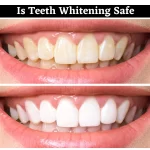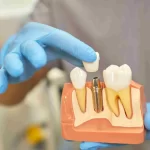An impacted wisdom tooth is the third molar at the back of your mouth that doesn’t have enough room to emerge and develop normally. In an adult, wisdom teeth are the last teeth to come to the mouth. People often have four wisdom teeth at the back of the mouth, two on the top and two at the bottom.
Impacted wisdom teeth may damage other teeth, resulting in pain and several other dental problems. Sometimes, they cause no apparent or immediate problems, but because impacted wisdom teeth are hard to clean, they can be more vulnerable to tooth decay or gum disease than other teeth. Some dentists recommend removing impacted wisdom teeth that don’t cause symptoms to prevent future problems.
Read on to learn more about impacted wisdom teeth.
Symptoms of an Impacted Wisdom Tooth
People usually get their wisdom teeth between the ages of 17 and 25. For some, these molars will erupt through the gums as they should. But for others, the teeth may become impacted – meaning they don’t come in properly and get stuck in the jawbone or gums. Impacted wisdom teeth can cause various problems, from mild discomfort to swelling and infection. They may also cause other dental problems such as crowding, infections, and cysts.
If you experience any of these symptoms related to impacted wisdom teeth, diagnosing and treating them as soon as possible is important.
Causes of an Impacted Wisdom Tooth
There are a few reasons why wisdom teeth can become impacted. The most common reason is a lack of space in the jaw. When the wisdom teeth come in, there is often not enough room for them to fit properly. Therefore, they grow at an angle or get stuck behind other teeth.
Another common reason for impacted wisdom teeth is that they do not develop normally, and sometimes they do not erupt at all or only partially erupt.
There are two kinds of impacted wisdom teeth – partially impacted wisdom tooth (which emerges partially, resulting in some of the crown being visible) and fully impacted wisdom tooth (which never breaks through the gums). Whether it is a fully or partially impacted wisdom tooth, it can:
- Grow at a 90-degree angle to the other teeth, in a position where it looks like it’s laying down inside the jawbone
- Grow at an angle in the direction of the next tooth, i.e., the second molar
- Grow at an angle to the back of the patient’s mouth
- Grow straight up or down like the other teeth but remain trapped within the jawbone
Types of Impacted Wisdom Teeth
There are four varieties of impacted wisdom teeth, and the positioning of your tooth classifies each type.
- Distal impactions occur when your wisdom tooth is angled toward the back of your mouth. Distal impactions are often asymptomatic but can cause pain if they become infected or damage the adjacent second molar.
- Vertical impactions are the type of impacted wisdom tooth still trapped beneath your gums. They occur when your wisdom tooth is in the correct position for eruption. Vertical impactions are often asymptomatic but can cause pain if they become infected or damage the adjacent teeth.
- Mesial impaction is one the most common type of impacted wisdom teeth. It occurs when the wisdom tooth is angled toward the front of your mouth. This type of impaction is usually not painful because there is more room for the tooth to erupt. However, mesial impaction can cause problems if they are left untreated. Your dentist will push the teeth in front of the impacted wisdom tooth out of alignment, and the wisdom tooth can also damage the roots of these teeth.
- The fourth and final type of impacted wisdom tooth is horizontal impaction. This occurs when the wisdom tooth lies completely on its side, trapped beneath the gums. A horizontally impacted wisdom tooth is often painful because it places excess pressure on the tooth in front of them. Horizontal impactions can also damage the roots of the adjacent teeth.
How Is an Impacted Wisdom Tooth Diagnosed?
If you experience any impacted wisdom tooth symptoms, you must immediately visit a dentist for an evaluation. Your dentist will take an X-ray of your mouth to determine if your wisdom teeth are impacted. The X-ray will show if the teeth are fully erupted, partially erupted, or not erupted at all. In some cases, impacted wisdom teeth may damage other teeth or bones. If this is the case, your dentist will discuss the treatment accordingly.
Treatment of an Impacted Wisdom Tooth
If you’re scheduled to have wisdom tooth surgery, it’s important to know what to expect. This type of surgery is usually an outpatient procedure, which means you can go home the same day. Your dentist will perform the operation, which is known as wisdom tooth extraction. During the process, they may use one of three types of anesthesia:
- local anesthesia
- sedation anesthesia
- general anesthesia.
The entire wisdom tooth surgery generally takes about 30 to 60 minutes.
After the surgery, you will have some swelling and discomfort. Your dentist will give you specific instructions on how to care for your mouth after the surgery. These instructions may include eating soft foods, using an ice pack, and taking over-the-counter pain medication. Most patients recover from wisdom tooth surgery within a few days. However, following your oral surgeon’s instructions is important to ensure a successful recovery.
Seek Best Care for an Impacted Wisdom Tooth at Minneapolis Dental Today!
An impacted wisdom tooth causes a wide range of symptoms, including swelling, pain, bad taste, pain that radiates throughout the jaw and face, and more. These symptoms affect the area behind your last molar. Our qualified dentist at Minneapolis Dental in MN can determine if your issues are due to impacted wisdom teeth.
Contact us to learn about the best treatment for you to ease your symptoms and reduce the risk of future oral health problems today


















